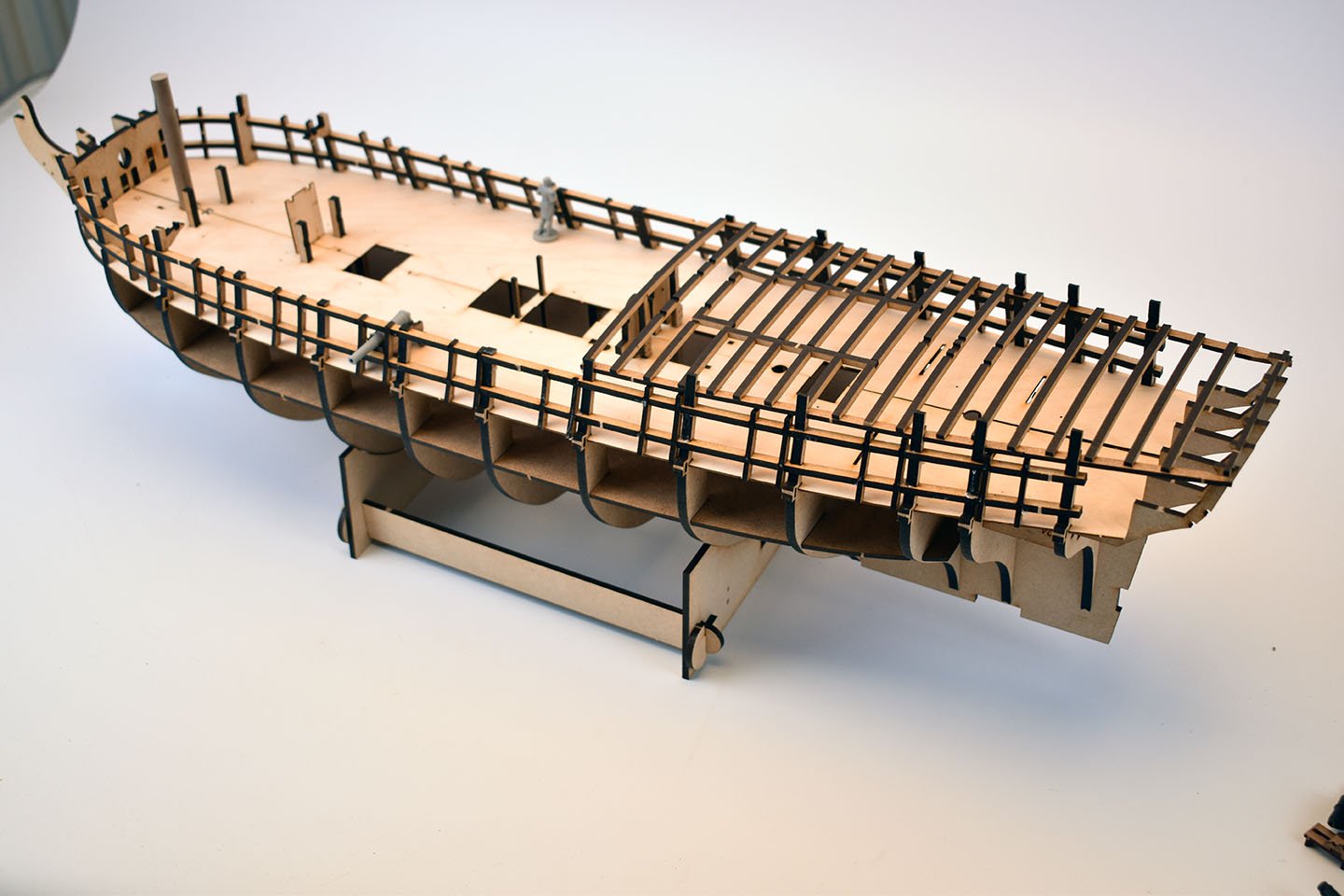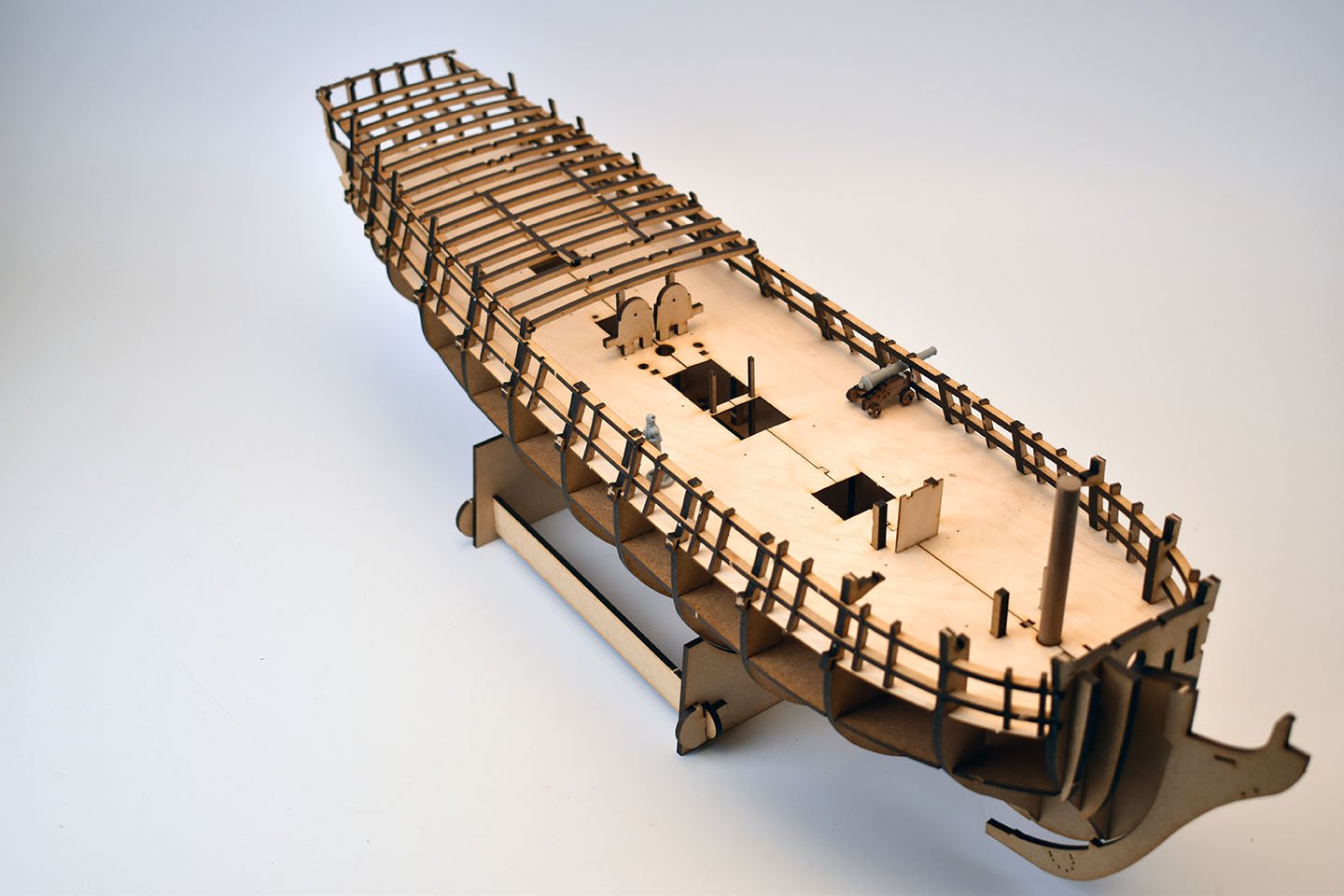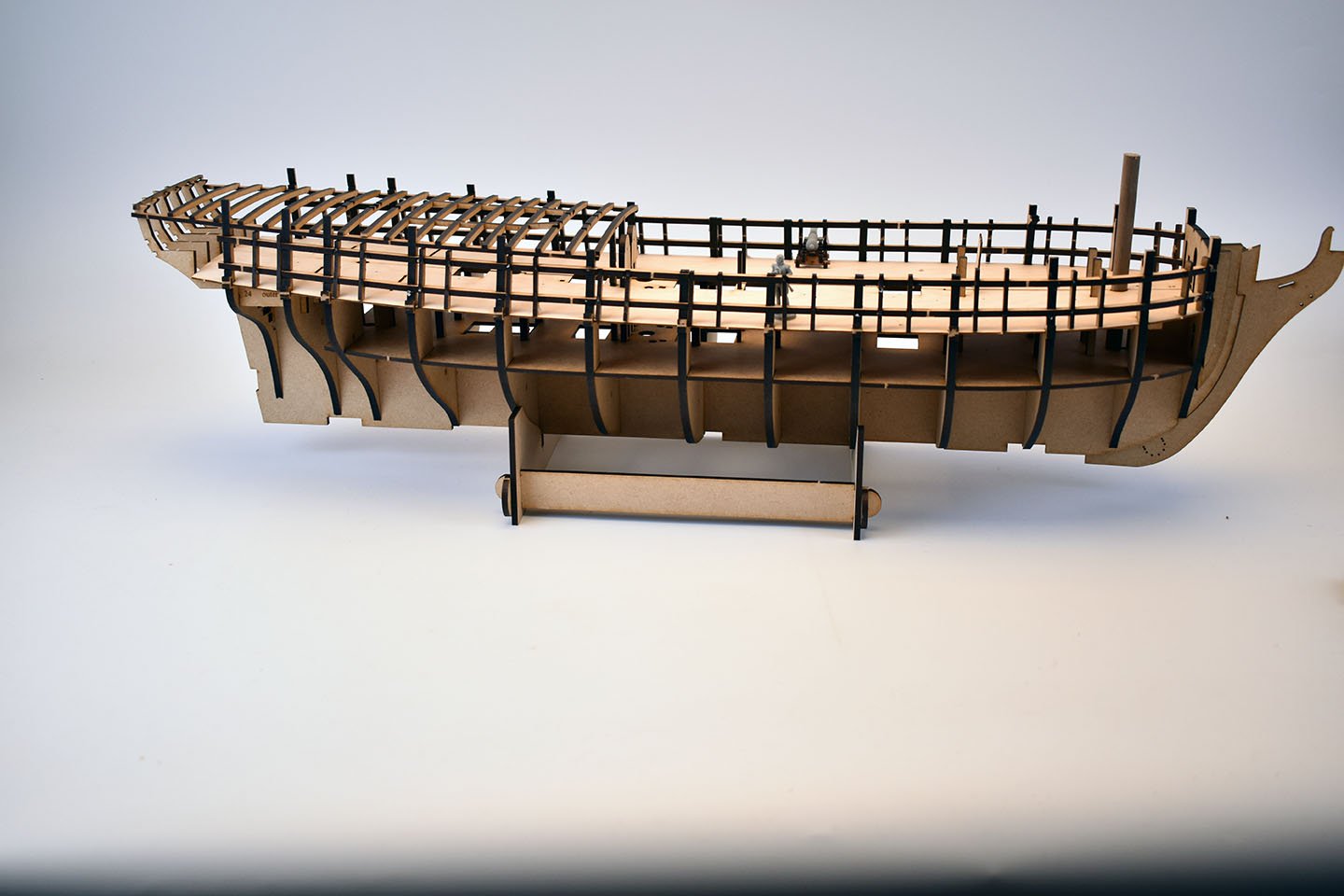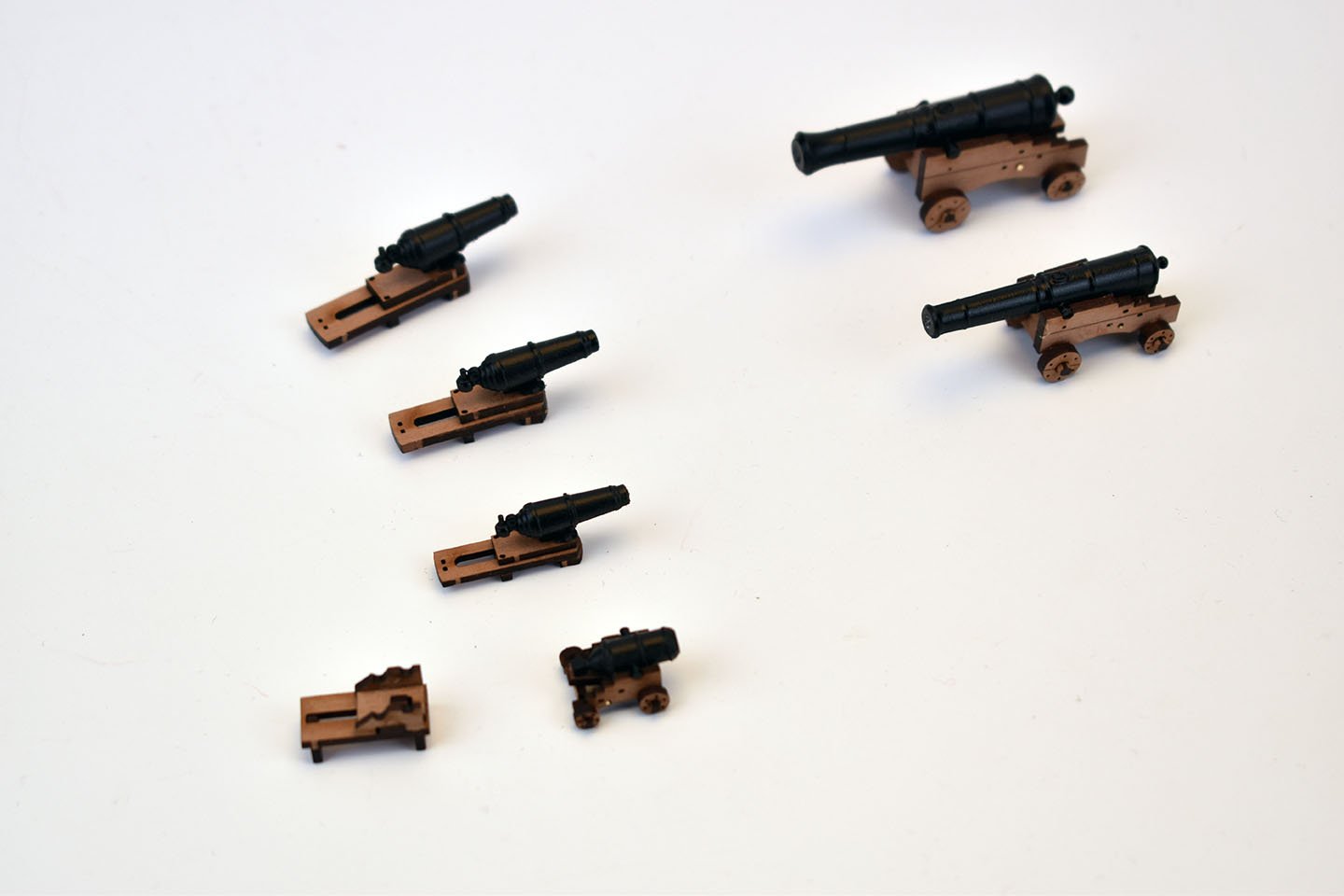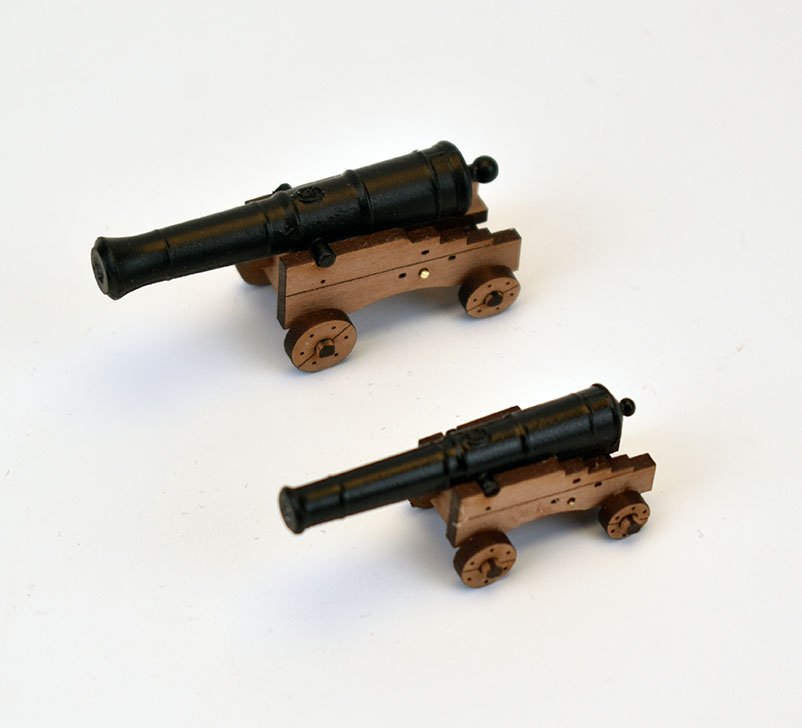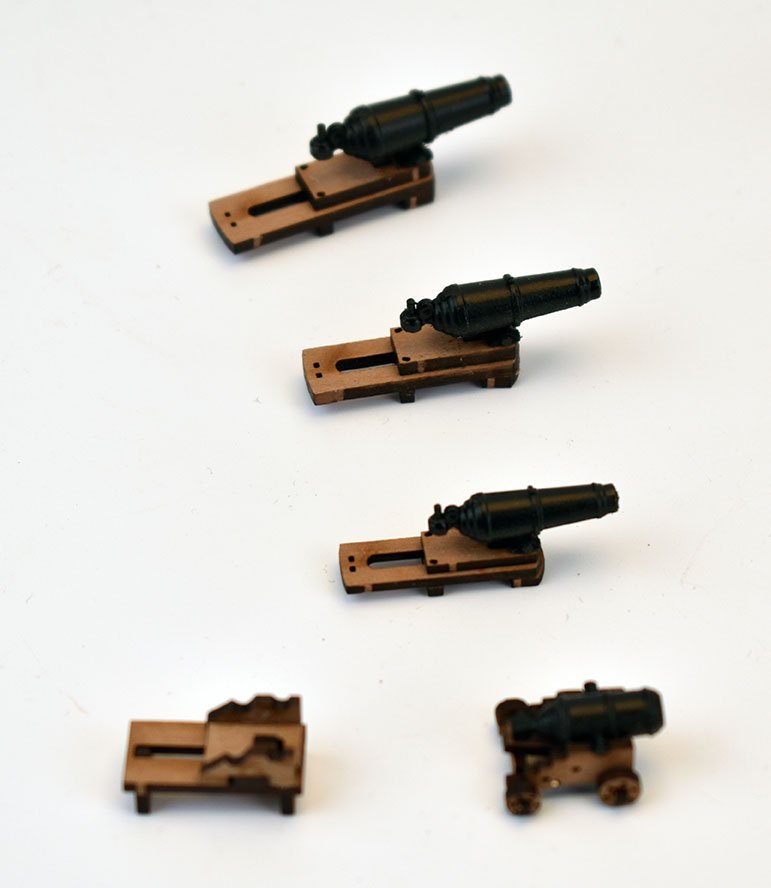-
Posts
2,321 -
Joined
-
Last visited
Content Type
Profiles
Forums
Gallery
Events
Everything posted by chris watton
-
I think I will keep stern frames as is, as I would like the modeller have the option of fitting out that area if they so wished. If they are all solid (but completely fool-proof), then it's a lot of work to try and mod that area. Better to meet half way, allow the modders a fighting chance whilst also allowing the general model maker to sand the area for the stern fascia with minimum risk of breaking anything - so the frames are a lot deeper that they should be, scale-wise. Oh yes, also I shall add coamings and gratings for that lower/berth deck But, I must stop this now and concentrate on the Duchess of Kingston manual, which shouldn't take too long thanks to Jim.
-
Almost 24 inches for the hull. Have to be careful, as the kits are designed for almost anyone to have a go. What I always have to think of is fragile parts, and how will the non expert modellers fare, a thin line between enjoyment of building and utter frustration. But the pics show more or less what I have in mind for my larger kits, will have to see how the stern holds up to some rough treatment, though, as I know some will moan when they break something.. I cut these parts this morning, actually, I cut two whole sets with slightly different designs for the forecastle and quarterdeck beams, and the one shown proved to be much easier to construct, so that may be what I shall go with, with those beams being spaced to scale.
-
As Jim helps me with completing the Duchess of Kingston model, I started designs on my first medium/large development (a littler larger than a Fly type kit), trying different methods in certain areas to allow more gun deck detail to seen when complete. This hull is over 600mm long and incorporates the gun port frames into the hull structure. But, as I said, this is a very early stage of the design, and this is the first time I have put the parts together, so I can get a feel for what needs to be done, and what I can and cannot get away with... All cut in MDF, only the gun deck in ply. All quarterdeck beams are just placed, not glued..
-
I am sure the object is not a 'Corvus' or any other kind of boarding bridge, as the vessels depicted are merchant/cargo ships.
-
(Provisional) Price is £342.50 and £30 for the optional pear blocks (standard blocks being included in the kit) Won't know the exact end cost until I have the plans and manual quotes
- 117 replies
-
- vanguard models
- yacht
-
(and 2 more)
Tagged with:
-
No 'Master Shipwright' version with this kit. This is because the materials have been tested twice (two full hulls made and finished) with the supplied materials, and I know these work. I am not sure how the boxwood would bend when wet, plus the cost of a MS version would be too prohibitive, due to the sheer amount of boxwood required. The only option for this kit will be the machined pear blocks and deadeyes. I may be open to special enquiries for people with experience with boxwood, but would be very expensive. (This would be 9 boxwood sheets) Regarding flags, I will at some point, but not yet.
- 117 replies
-
- vanguard models
- yacht
-
(and 2 more)
Tagged with:
-
Only once I have the plans and manual in printing. Everything else is done. I weighed the laser cut and photo etched parts pack today, well over 1.3kg. A lot of parts, but that doesn't mean complicated, it just means there are less (or no) parts for the modeller to fashion from scratch from a supplied lump or strip of wood. I think Jim's managed to get this far in just 5 weeks!
- 117 replies
-
- vanguard models
- yacht
-
(and 2 more)
Tagged with:
-
Am hoping end of October, beginning of November.
- 117 replies
-
- vanguard models
- yacht
-
(and 2 more)
Tagged with:
-
Not sure about selling timber packs for other kits, as what I buy is quite expensive and purchase enough for a set amount of kits. However, after my next development, I do plan to develop a 'Cruiser-Like' brig, but not Cruiser Class, and will look similar (although curves are more agreeable), being an earlier brig (by only 2 years). It will have 16x32 pounder carronades and 2x6-pounder long guns, standard set up for brigs of this period.
-
Doris, you are truly gifted. As others have rightly said, your work is stunning.
- 1,035 replies
-
- royal katherine
- ship of the line
-
(and 1 more)
Tagged with:
-
Cheers! Just completed all the laser cutting for the kits. there are no less than 19 separate laser cut sheets per kit, with half that amount being pear wood. This does mean that first and second planking starts below the main deck level, so not so much of that to do.
- 117 replies
-
- vanguard models
- yacht
-
(and 2 more)
Tagged with:
-
Yachts are very very nice, and again, one day, if if I manage to make a real living from this, I will have the luxury of choosing more subjects that perhaps demand a lot of (very expensive) suites of shiny brass fittings, like the yacht above would demand. Again, right now, I want to concentrate on the subjects I think people will like most, with the majority of new developments being fresh subjects (not released as a kit anywhere before). I have about 5 or 6 years worth of subjects to tackle already in my 'Future Developments' folder, and range from the 1750's to the first decade of the 19th Century. This is the period that interests me more than any other. I am now back at work (Just got home), so developments will slow down again, as I am back to my two jobs instead of spending all of my time on the one (I really want to do...)
-
For this prototype model, I wanted the least amount of paint we could get away with, as the contrasts of the colours with the pear work very well, I think. The pear is a nice colour and closer grained than standard kit fare (walnut/basswood), and I wanted to show this as much as possible. It seems the white, black, red, blue and gold go well with the wood. But of course, the modeller can paint the model however they wish, depending on preference - paint schemes for such vessels should only be treated as guidelines . But I do feel in this instance, the less paint used, the better.
- 117 replies
-
- vanguard models
- yacht
-
(and 2 more)
Tagged with:
-
No problem, I didn't mean to appear curt, it was frustrating not being able to find any real history of the vessel, but it definitely was built for the Duchess of Kingston by Hillhouse of Bristol. ETA - I have attached the nameplate that comes with the stand..
- 117 replies
-
- vanguard models
- yacht
-
(and 2 more)
Tagged with:
-
Yep, that's what I used for the basis of this kit.
- 117 replies
-
- vanguard models
- yacht
-
(and 2 more)
Tagged with:
-
I do like the looks of the xebec, but not on my 'must do' list yet, as there are at least two kits of this out there that make up into very fine models. Right now, I want to develop kits that haven't been done before for a completely fresh range. That is not to say I won't, I probably will if things are successful, but for now, I just want to concentrate on developing from my original 'wish list'..
-
In lieu of a name, the actual title I gave the model is 'HM Royal Yacht (built for) The Duchess of Kingston I do not see anything fictitious about that, as this is what is written on the actual plans ETA - This isn't in my Sailing Navy List book too, but the NMM do have the plans, albeit just the one sheet.
- 117 replies
-
- vanguard models
- yacht
-
(and 2 more)
Tagged with:
-
I had my 3-d printed samples arrive yesterday for the carronades and 32 and 18 pounder barrels, the 3-d files are now with my resin castor, who will printed them and use them for the masters for the black resin castings. One change I have asked my castor to make is to remove the threaded bar at the rear of each carronade and replace with a hole to which a length of brass will be pushed through to simulate the threaded bar. It is too delicate to cast, and all broke on my 3-d printed samples. I have included a couple of (very bad) pics, showing them on their respective carriages. I am still awaiting the PE for each, most noticeable on the carronade beds, which will have PE rear wheels. There is a 32, 24 and 18 pounder standard carronade, plus an early (1780) 12 pounder, with options for early slide or wheeled carriage - looks very 'stumpy'... Joint bolt and blocks are integrated with the carronade assemblies, and all that is required to fit it to slot them into the sliding upper bed, so no fiddly work required.
-
Topgallant shrouds did not have ratlines. At least not British warships, if we're talking mid 18th century onwards. Patrick O'Brian even mentions the lack of ratlines at the topgallant in his book Desolation Island (HMS Leopard)
-
Cannot say yet, as the 'other' revisit is a way off. I am back at work now, so time is limited again, dammit, but I have just started designs for my 7th kit, which will have gun ports integrated with the hull frames/bulkheads. Also, today I received my samples (3-d prints at this time, will have the nice resin castings sometime next month) of another 32 pounder and 18 pounder (latter a frigate 18 pounder, but not my 7th kit, that's for later..), plus 18, 24 and 32 pounder carronade barrels and finally a late entry, an early (1780) 12 pounder carronade barrel with trunnions. Will laser cut the carriages for them when I have time and take pics. I have sent PE files to be done, so these will be offered as a complete unit, carriage, barrel and PE parts.
-
Nice model - but I apologise, it was one of my very first... For the rigging, I follow the main sources. It is important to note that by the end the 18th Century and most definitely 1800 and after, the crossjack was replaced with a main yard and sail. It is highly likely this practise was used well before 1800, with commanders experimenting with the best set up for their vessels. I am sure all Cruiser Class would have had a main yard instead of crossjack. Flirt would be a grey area, but Speedy would have had the main yard, as this is depicted as it probably looked in around 1800.
- 102 replies
-
- cruiser
- caldercraft
-
(and 1 more)
Tagged with:
-
The rear bulkheads do need severe bevelling for the planks to run smooth. I cannot reduce the bulkhead lines as this would make them too small when bevelled. Bulkhead size and shape is an area I spend a lot of time getting right when first starting any new design - but usually the rear most bulkheads, especially with hull lines as fine as Speedy Class, require a lot of sanding.
About us
Modelshipworld - Advancing Ship Modeling through Research
SSL Secured
Your security is important for us so this Website is SSL-Secured
NRG Mailing Address
Nautical Research Guild
237 South Lincoln Street
Westmont IL, 60559-1917
Model Ship World ® and the MSW logo are Registered Trademarks, and belong to the Nautical Research Guild (United States Patent and Trademark Office: No. 6,929,264 & No. 6,929,274, registered Dec. 20, 2022)
Helpful Links
About the NRG
If you enjoy building ship models that are historically accurate as well as beautiful, then The Nautical Research Guild (NRG) is just right for you.
The Guild is a non-profit educational organization whose mission is to “Advance Ship Modeling Through Research”. We provide support to our members in their efforts to raise the quality of their model ships.
The Nautical Research Guild has published our world-renowned quarterly magazine, The Nautical Research Journal, since 1955. The pages of the Journal are full of articles by accomplished ship modelers who show you how they create those exquisite details on their models, and by maritime historians who show you the correct details to build. The Journal is available in both print and digital editions. Go to the NRG web site (www.thenrg.org) to download a complimentary digital copy of the Journal. The NRG also publishes plan sets, books and compilations of back issues of the Journal and the former Ships in Scale and Model Ship Builder magazines.





